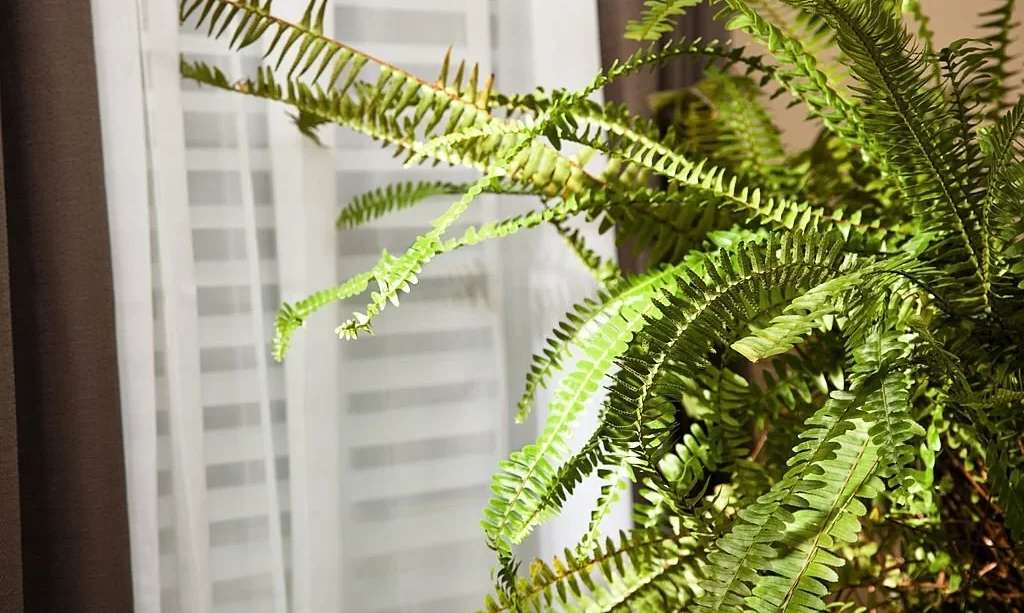The Boston fern, with its gracefully arching fronds, has long been a cherished houseplant, adding a touch of elegance and a breath of fresh air to our indoor spaces. To ensure these lush, green beauties thrive, proper care is essential. One valuable tool in your arsenal for nurturing Boston ferns is Epsom salt. In this article, we will explore the world of Boston fern care and delve into the use of Epsom salt. Epsom salt, also known as magnesium sulfate, offers numerous benefits for these ferns, from enhancing their frond color to promoting overall plant health. Let’s unlock the secrets of how much Epsom salt to use and how it can contribute to the vibrancy of your Boston ferns.
- Enhances nutrient absorption, acting as a potent plant nutrient and root developer.
- Boosts chlorophyll production for healthier, greener plants and a vibrant garden.
- Unique liquid Epsom salt for plants, a go-to solution for gardeners and plant enthusiasts.
- Epsom Salt for garden promotes stronger root development for a lush and thriving garden.
- Favored for use in gardening, lawns, and all plant types needing a nutrient boost.
Epsom Salt
Epsom salt, chemically known as magnesium sulfate, is a versatile and cost-effective substance often found in homes. It plays a significant role in plant nutrition, serving as a source of two essential elements: magnesium and sulfur. These elements are crucial for plant growth and development. Magnesium, in particular, is integral for photosynthesis, as it is a central component of the chlorophyll molecule that helps plants convert sunlight into energy. Understanding the basics of Epsom salt and its components provides insight into its beneficial effects on Boston ferns.
The Benefits of Epsom Salt for Boston Ferns
The application of Epsom salt can bring several advantages to Boston ferns. These benefits include:
- Enhanced Nutrient Absorption: Magnesium, a primary component of Epsom salt, aids in the uptake of other essential nutrients, ensuring that your fern receives all the nourishment it requires.
- Vibrant Frond Color: Epsom salt can promote the deep green color of Boston fern fronds, enhancing their aesthetic appeal.
- Overall Plant Health: The magnesium and sulfur from Epsom salt contribute to the overall well-being of your fern, making it more robust and resilient.
These advantages make Epsom salt a valuable addition to your Boston fern care routine. In the sections to come, we’ll explore the specifics of how much Epsom salt to use and the best practices for applying it to your beloved ferns.
How Much Epsom Salt to Use
The appropriate amount of Epsom salt to use for your Boston fern largely depends on the size of your fern and the size of its pot. As a general guideline, you can use approximately 1 tablespoon of Epsom salt per gallon of water. This mixture can be applied to your Boston fern to provide the necessary magnesium and sulfur.
For smaller ferns or those in smaller pots, you may want to reduce the quantity accordingly. Conversely, for larger ferns or those in larger pots, you can adjust the amount as needed. The goal is to provide a supplemental source of magnesium and sulfur without overwhelming the plant.
It’s important to remember that Epsom salt is not a daily requirement; it should be used sparingly. To avoid overuse, it’s recommended to apply this mixture about once a month or as needed when you notice signs of magnesium deficiency in your fern.
- HELPS EASE ACHES & PAINS: Pharmaceutical-grade Epsom salt works to soothe aches
- THERAPEUTIC SOAK: Ideal for soothing muscle pains
- TIRED FEET: Great for sore and exhausted feet
- FRAGRANCE-FREE: Ideal for sensitive skin
- FAST-DISSOLVING: Ultra fine crystals quickly dissolve
How to Apply Epsom Salt
Applying Epsom salt to your Boston fern can be done through two primary methods: soil drenching and foliar application.
Soil Drenching:
- Dissolve the appropriate amount of Epsom salt (as discussed in the previous section) in water.
- Pour the Epsom salt solution directly into the potting soil, ensuring even distribution around the root zone.
- Water your fern thoroughly after applying the solution to help it absorb the nutrients.
Foliar Application:
- Prepare the Epsom salt solution as mentioned earlier.
- Use a spray bottle to mist the fronds of your Boston fern with the Epsom salt solution. Ensure that the solution covers the fronds evenly, but avoid soaking them excessively.
- Allow the fern to absorb the solution through its fronds.
Both methods can be effective, but foliar application is often chosen when you want to address magnesium deficiency more directly. Whether you choose soil drenching or foliar application, it’s essential to maintain a balanced approach, ensuring that you don’t overuse Epsom salt, which could lead to adverse effects.
By understanding how much Epsom salt to use and how to apply it, you can incorporate this valuable supplement into your Boston fern care routine, promoting its well-being and vibrant appearance.
Signs of Overuse and Caution
While Epsom salt can be highly beneficial for Boston ferns, it’s essential to exercise caution to avoid overuse. Using excessive amounts of Epsom salt can lead to detrimental effects. Signs of overuse may include leaf burn, a white crust on the soil surface, or a buildup of mineral deposits in the pot. If you notice any of these signs, it’s crucial to reduce or halt the use of Epsom salt for your fern. Remember that moderation is key when supplementing your Boston fern’s nutrition with Epsom salt.
Boston Fern Care Tips
In addition to using Epsom salt wisely, here are some general care tips for your Boston fern:
- Watering: Keep the soil consistently moist but not waterlogged. Boston ferns thrive in high humidity, so consider using a humidity tray or misting the fronds regularly.
- Light: Provide bright, indirect light for your fern. Avoid direct sunlight, which can scorch its delicate fronds.
- Temperature: Boston ferns prefer temperatures between 60-75°F (15-24°C). Avoid drafts and sudden temperature fluctuations.
- Repotting: Repot your fern when it becomes root-bound, typically every one to two years. Use a well-draining potting mix.
- Pruning: Trim dead or yellowing fronds to encourage new growth and maintain the plant’s appearance.
- Professional Liquid Fertilizer for: Ferns outdoor and as houseplants. Crocodile Fern (Microsorium musifolium), Lemon Button Fern (Nephrolepis cordifolia), Maidenhair Fern (Adiantum raddianum), Rabbit’s-Foot Fern (Humata tyermanii), Staghorn Fern (Platycerium bifurcatum), Bird’s Nest Fern (Asplenium nidus), Kangaroo Paw Fern (Microsorium diversifolium), Boston Fern (Nephrolepis exaltata) etc.
- This food for plants belongs to the latest generation of fertilizers.
- Very rapid effects, can be administered via the roots and as a foliar fertilizer. For 60-125 liters of ready to use liquid fertilizer
- Content: 250 ml, works as an economical concentrate. Simple dosage with the help of the cap.
- The fertilizers from the GREEN24 PROFI LINE were developed by gardeners of various departments and were evolved and produced based on the current knowledge in the field of propagation and cultivation of plants.
Conclusion
Your Boston fern, with its graceful fronds and vibrant green color, is a true testament to nature’s beauty. By understanding how to use Epsom salt wisely and applying it in moderation, you can harness its benefits to enhance your fern’s health and appearance. Epsom salt, with its magnesium and sulfur components, can aid nutrient absorption, promote frond color, and contribute to overall plant well-being.
As you care for your Boston fern, remember the signs of overuse and the importance of caution. Balance your use of Epsom salt with a holistic approach to fern care, ensuring consistent moisture, appropriate lighting, and proper humidity levels. By following these guidelines, your Boston fern will continue to thrive, gracing your indoor spaces with its natural elegance.






